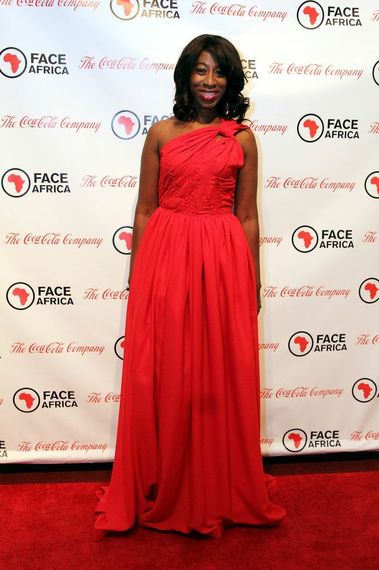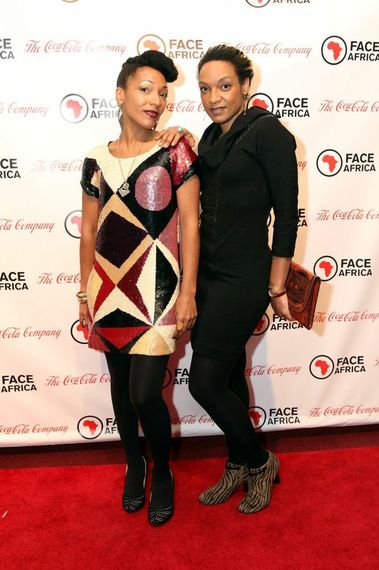To share is to thank, and to thank, is to love -- that is why I'd like to share the TEDx talk so that I may thank them, for their kindness, their generosity and most of all, their love for me and the power of art that I live for. May they know the gratitude that lives in my heart beats strong for the conviction they have in theirs. To them and to my mother, who gives me everything a mother possibly could and then some, thank you. Thank you 10,000 times, every day of the week. But especially, most surely on Mondays.
The full transcript for the talk is below:
My name is Yazmany.
Today I will be sharing with you 10,000 reasons why I believe in the power of art in public space: Its power to engage, drive people to reflect and lead them to believe in themselves and their communities.
My work deals mostly with issues of multiple realities -- that is, how what we see, what we believe or assume can often be a distortion of the truth, the result of pre-conceived notions, rather than what is often a more complex story. In the past I have focused on creating objects: photographs, paintings and sculptures that were formally presented in gallery settings from New York to London.
Putting on these exhibits was exhilarating but also daunting, it was grueling, but also incredibly liberating. And yet, as much as I was grateful for the opportunity to share the results of my work within these spaces, I couldn't help but think that the traditional gallery space format was too constraining.
Why? Because it felt like the work was being stifled by its context. That is, it only reached the people who came inside the space.
But what about everyone else?
And that's how I came to believe that, in order to get more people to engage with and reflect on the issues that I care about, I had to take the work outside the confines of a gallery.
The Monday Morning project was born, in 2011, from a desire to reach into communities, to have an impact not just on the lives of people who are used to going to galleries, but also on that of the many more people who never do so.
This project was built on a simple idea: To disrupt the routines of commuters as they head to work, using the simplest of objects:
BALLOONS.
I wanted to do this on a large scale, so in every city, I enrolled over one hundred local artists and activists, who handed ten thousand brightly colored biodegradable balloons, to commuters on their way to work, creating a dynamic, LIVING SCULPTURE. That is, a physical manifestation of humans engaging with each other while creating beauty.
In India the balloons were orange, in Japan, green and in Kenya, yellow.
So imagine...
I am in Kenya. Two weeks ahead of staging our orchestration in Nairobi an al-Shabaab operative throws a grenade into a popular restaurant injuring 13 people. Armed police step up security in the Kenyan capital after the attack and many news outlets report this might be the first attack in a series from Somalia's al-Qaeda-linked militants.
Needless to say, everyone in Nairobi is afraid to go out to shopping centers, parks and other public spaces. Needless to say, I am afraid. We engage in conversation: Do we still give out our 10,000 yellow balloons?
I look around to all of the volunteers in the room and without hesitation Kevin stands up and announces that we have no option. We must do this and honor all of the people who in spite of fear go about their lives and succeed. At this point, I reflect on my youth in Colombia. I remember how the perception of that country, certainly up until very recently, was that of a very violent place made up of kidnappings, drugs, and murder.
In fact, when I was 11-years-old and growing up in Medellin, four men riding motorcycles sprayed bullets into my father while he was standing next to his car at a gas station. I have always held that reality tightly in one hand while the other hand has held the beauty of the Andes mountains, my mother's humor and the flavor of Salsa and Merengue...
Colombians' hips don't lie.
So here we are two weeks later in Nairobi...
Two years later, we are about to launch Monday Morning in Kabul, Afghanistan, and I am in a room with twelve volunteer leaders. We have been preparing for the orchestration which is meant to happen less than twelve hours away and all we can hear are bullets and bombs exploding less than a mile away.
Taliban gunmen backed by a suicide car bomber attack an international aid group's compound, killing two guards and engage in a seven-hour-long street battle with police in the heart of the city. I looked at the volunteers that were present and asked for them to reflect with their teams.
On facebook there were ongoing conversations about the reality of the horror that was going on nearby and how we would need to modify our plans for the following morning. Nargis posted and said that "If we all stick together and plan strategically we will create our Living Sculpture successfully in the face of this violence."
Azim agreed, "By doing this together we can change the face of Afghanistan." Qais followed by stating that he could still "hear the voices of bullets," but that he had just received a call from a friend who wanted to join us because "he believed that the project was now more relevant than ever."
At that point, I reminded them all of what we had accomplished in the previous four months:
- We had earned the support of 12 different organizations including: Local Art Collectives, the Center of Contemporary Art of Afghanistan, and Human Right Advocacy groups including UNAMA, the United Nations Mission in Afghanistan.
- People from 42 countries sent us financial support to make the project possible.
- And, with the support of the Moby Media Group, the largest media company in the country, we broadcasted a commercial across Afghanistan in both the national languages (Dari and Pashto).
And here is that commercial now.
On Saturday, May 25th, over 100 brave Afghan artists and activists ballooned an unsuspecting community a bright shade of pink.
In every city where we have created this orchestration, people have filled their balloons as they wished.
In Kabul, Zarlasht believed in balloons because for her they expressed her freedom and it was important to her to share that freedom with others. Haroon believed that each one of our balloons was a seed to cultivate women's rights. For Hamed, the balloons created a new platform to share with the rest of the world the beauty that he sees in Kabul's streets every day.
Even the Taliban believed our balloons had something to say.
All of these narratives are equally true and equally powerful.
10,000 balloons represented 10,000 opportunities to re-imagine Afghanistan. Every single volunteer engaged the city of Kabul that morning, reflecting with its citizens what their community believes in.
The citizens of Kabul took ownership of the living sculpture we created, and made it the biggest public art project in the history of that city. In an urban environment marked by fear, pink balloons meant more than a celebration; they sparked a people's imagination. Through the framework of art, we can create room for the adjacent possible -- that is, create room for alternate ways of thinking in the face of challenging circumstances.
We can become engaged citizens, responsible for one another beyond language, politics, religion or ethnicity.
In Kabul I learned to let go of my fears and to imagine what we can accomplish together. As I think of Kevin, Zarlasht and Haroon and what they were brave enough to try, I think of how much we can all do, when we choose to engage one another and believe in our collective power. Engaging with hundreds of fearless artists and activists, it became clear to me that we are not just responsible for people who inhabit our emotional and physical space but also for everyone else.
So imagine...
This balloon could be the idea for "the first supper" a feast of a picnic in the center of campus where all bring food to share with strangers that will shortly thereafter be friends.
And this one could be a "Jackson Pollock Party" where you invite people from a rival university to join you in an evening where you splatter paint on floors, walls, ceilings and yourselves...all while learning about all the things you have in common.
This balloon could be "Boticelli's Primavera Reinterpreted," a silent rave in your home town's largest square where everyone comes to dance to their favorite tunes, with their headphones on.
What will you do with this one when you leave this space?
What do YOU think this could be?
What do you BELIEVE in?




































